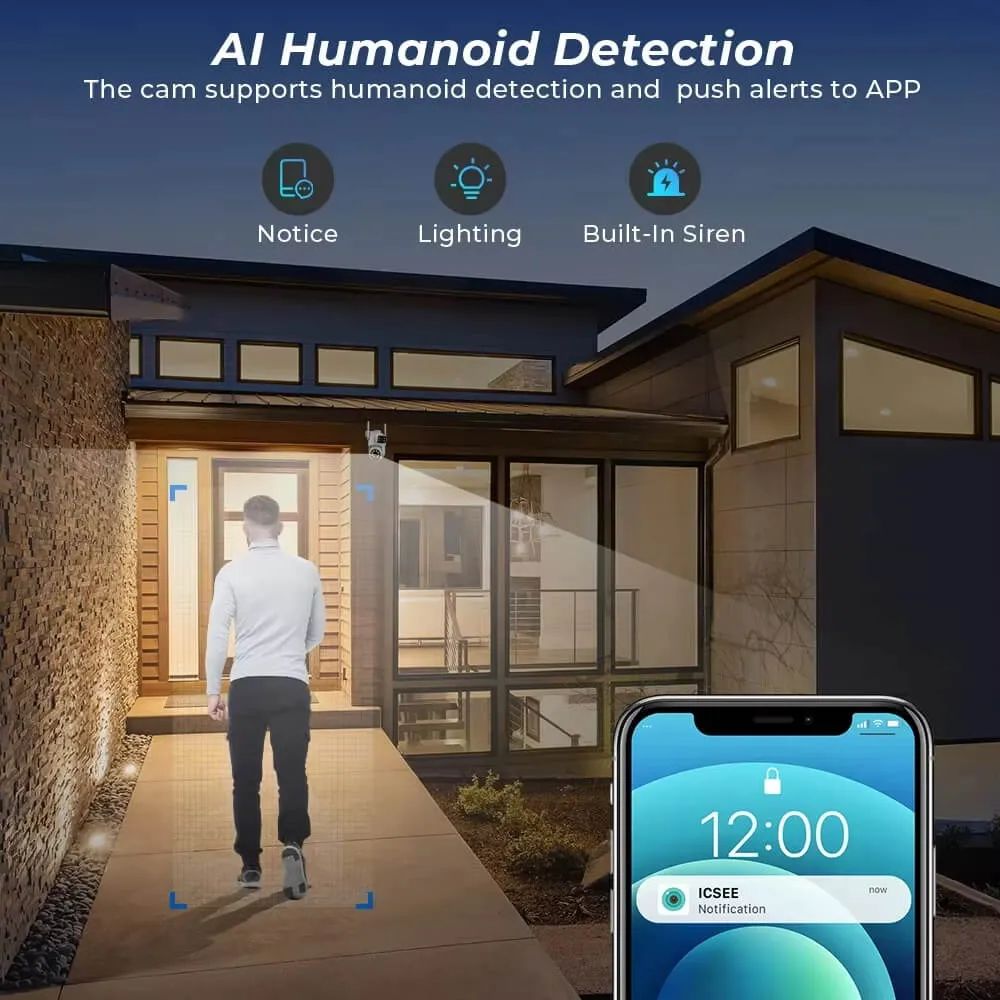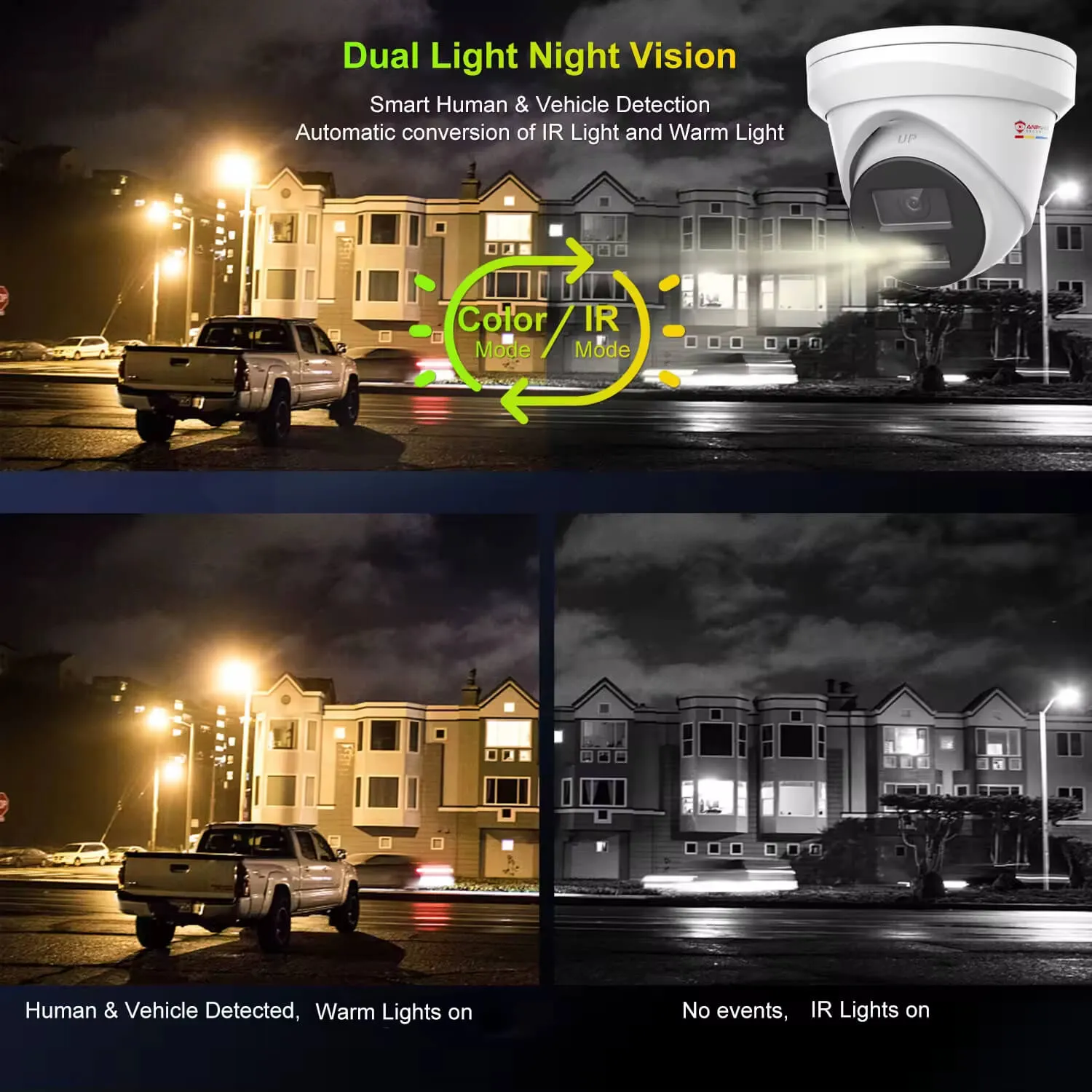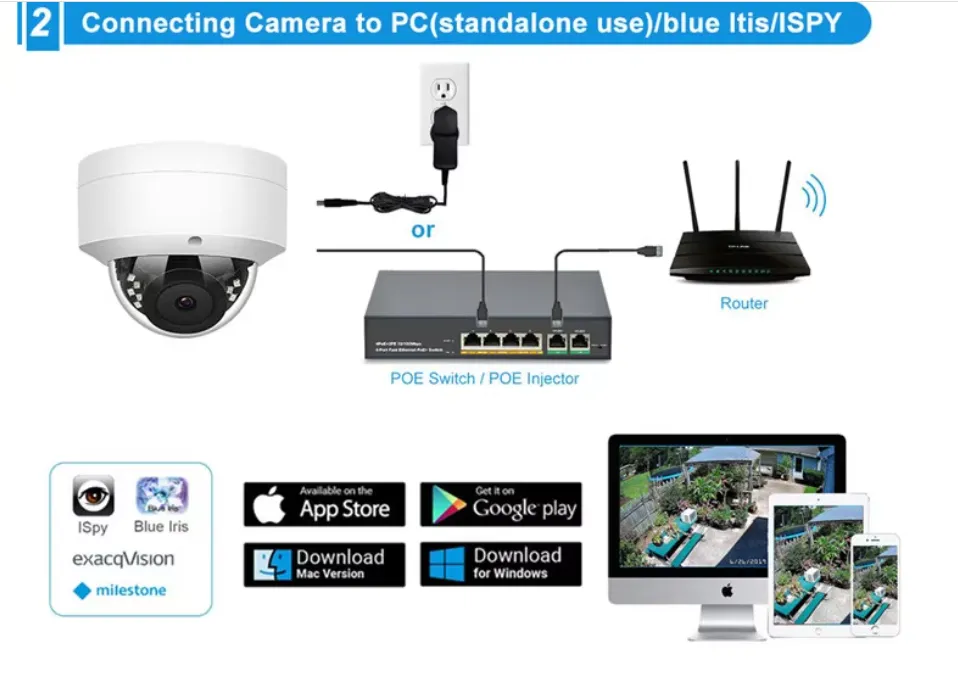The Future of Surveillance: Top AI Cameras for 2025
| Metric | 2024 (Baseline) | 2025 (Forecast) | 2029 (Projected) | CAGR (2025-2029) |
|---|---|---|---|---|
| Market Size | ~$17.66 Billion | $21.81 Billion | $56.44 Billion | ~26.8% |
| AI in Video Surveillance | $6.51 Billion | $7.57 Billion | ~$28+ Billion | ~30.6% |
Sources: The Business Research Company, Grand View Research, Global Growth Insights
What You Need to Know About AI Cameras in 2025
The surveillance industry is experiencing a revolutionary transformation. Therefore, understanding these key points will help you make smart decisions:
- AI cameras reduce false alarms by up to 99% compared to traditional motion detection systems
- Edge computing eliminates the need for constant cloud connectivity while improving response times
- Proactive threat detection shifts security from reactive recording to preventive protection
- Smart analytics provide valuable business insights beyond basic security functions
- Privacy features address growing concerns about data protection and surveillance ethics
At JER Technology, we’ve been pioneering surveillance solutions since 2009. Consequently, we understand how these advances will shape the future of security.
Why AI Cameras Are Game-Changers: Beyond Basic Recording
Traditional security cameras simply record video. However, AI cameras actually understand what they’re seeing. Furthermore, this fundamental difference changes everything about how surveillance works.
A standard camera captures moving pixels. In contrast, an AI camera identifies objects, classifies them as humans or vehicles, and interprets behavior patterns. As a result, you get meaningful alerts instead of constant notifications about swaying trees or passing cats.

AI-powered surveillance systems provide intelligent monitoring beyond traditional recording methods
The onboard processing unit, often called a “deep learning” or “neural processing” unit, analyzes video in real-time. Therefore, these cameras can trigger alerts only when genuine threats occur. For instance, they’ll notify you when a person enters a restricted area while ignoring harmless movements.
Top AI Camera Features That Matter in 2025
| Feature/Technology | Core Benefit | Real-World Applications |
|---|---|---|
| Proactive Threat Detection | Real-time alerts for weapons, loitering, and perimeter breaches | School security, retail loss prevention, critical infrastructure |
| Edge-Based Processing | Reduced latency and bandwidth usage | Remote locations, bandwidth-limited environments |
| AI-Powered Search | Search hours of footage in seconds | Investigation support, evidence gathering |
| Low-Light Vision | Clear images in near-total darkness | 24/7 monitoring, parking lots, outdoor perimeters |
| Behavioral Analysis | Detects unusual patterns and activities | Crowd management, fall detection, traffic monitoring |
The False Alarm Solution: How AI Saves Time and Money
False alarms plague traditional security systems. Moreover, they create “alert fatigue” that reduces security effectiveness. However, AI technology solves this critical problem.

Wireless AI cameras eliminate false alarms through intelligent detection algorithms
Traditional motion detection triggers on any pixel change. Consequently, rain, shadows, insects, or rustling leaves constantly trigger false alerts. In contrast, AI-powered systems use deep learning algorithms trained on millions of images.
These intelligent systems understand the difference between humans, vehicles, and other moving objects. Therefore, you can create specific rules like “only alert me if a person crosses this line between 9 PM and 6 AM.” According to leading manufacturers, this reduces false alarms by up to 99%.
The single biggest factor in making security systems more effective is eliminating false alarms. AI intelligence transforms security from a reactive burden into a proactive asset.”
Are AI Cameras Worth the Investment?
For Businesses
The return on investment for businesses is compelling. Primarily, AI cameras provide dramatic false alarm reduction, saving significant time and money. Additionally, they offer valuable business intelligence beyond security.
Business benefits include:
- Operational efficiency: Foot traffic analysis and heat mapping optimize store layouts
- Safety compliance: PPE detection ensures worker safety standards
- Loss prevention: Advanced analytics identify suspicious behavior patterns
- Customer insights: Understanding visitor patterns improves service delivery
For Homeowners
Homeowners benefit from more meaningful alerts and reduced disruption. Instead of notifications for every passing car, you receive alerts only when people enter your property or packages arrive.
This creates a more effective and less intrusive security experience. Furthermore, modern AI cameras integrate seamlessly with smart home systems for automated responses.
Smart Recognition: Faces, License Plates, and Objects
Advanced AI cameras perform sophisticated recognition tasks. Specifically, facial recognition enables access control and VIP customer identification. Similarly, license plate recognition (LPR) helps with parking management and vehicle tracking.

Modern IP surveillance systems provide comprehensive analytics and recognition capabilities
Object recognition extends beyond people and vehicles. For example, AI cameras can identify unattended bags, missing fire extinguishers, or unauthorized objects in restricted areas. Consequently, this adds multiple layers of security and operational awareness.
Popular applications include:
- Retail: Identifying known shoplifters or VIP customers
- Parking: Automated license plate tracking and payment systems
- Industrial: Monitoring for safety equipment and unauthorized materials
- Healthcare: Patient monitoring and fall detection systems
Privacy and Security: Addressing Your Concerns
AI surveillance raises legitimate privacy concerns. However, responsible manufacturers prioritize data protection and user privacy. At JER Technology, we understand these concerns and build privacy features into our solutions.
Essential privacy protections include:
- End-to-end encryption: Protects video data during transmission and storage
- Regulatory compliance: Adherence to GDPR and CCPA privacy regulations
- Privacy masking: Permanently blocks sensitive areas from camera view
- Local processing: Edge computing reduces data transmission requirements
- Transparency: Clear policies about data collection and usage
Moreover, many AI features work entirely on-device without sending data to external servers. This approach protects privacy while maintaining functionality.
Understanding AI Camera Costs: Hardware vs. Subscriptions
AI camera pricing varies significantly based on features and deployment models. Generally, you’ll encounter two cost structures:
On-Device AI
Many cameras now include basic AI features like human and vehicle detection at no additional subscription cost. These analytics run directly on the camera hardware. Therefore, you pay once and own the functionality permanently.
Cloud-Based AI (VSaaS)
Video Surveillance as a Service (VSaaS) platforms provide more powerful, scalable AI features through monthly subscriptions. However, they also include cloud storage and advanced analytics capabilities.

Understanding camera pricing helps businesses make informed investment decisions
The choice depends on your specific needs and budget preferences. Edge computing trends favor on-device processing, reducing ongoing subscription costs while improving privacy and reliability.
The Future of Home and Business Security
The future of security extends far beyond simple alerts. Specifically, expect these developments in 2025 and beyond:
Predictive Intelligence
AI systems will learn patterns and suggest potential security risks before they materialize. For instance, “An unrecognized person has been loitering near your property for 10 minutes.”
Smart Home Integration
Cameras will automatically control other systems when detecting threats. Therefore, they’ll lock doors, activate lights, and play warning messages without human intervention.
Seamless Coverage
Unified systems will manage indoor and outdoor cameras intelligently. Consequently, they’ll track events as they move across your entire property, providing complete situational awareness.
According to Markets and Markets research, these integrated solutions represent the fastest-growing segment of the surveillance industry.
Choosing the Right AI Camera: Key Questions to Ask
When selecting AI cameras, consider these essential factors:
- What specific AI features do you need? Focus on capabilities that solve your actual problems
- Do you prefer on-device or cloud-based processing? Consider privacy, costs, and reliability requirements
- What resolution and coverage area do you require? Balance image quality with storage and bandwidth needs
- How important is low-light performance? Evaluate infrared, thermal, or full-color night vision options
- What integration capabilities do you need? Ensure compatibility with existing security and IT systems
- What are the total ownership costs? Include hardware, installation, maintenance, and subscription fees
Additionally, consider the manufacturer’s track record and support capabilities. Established companies like JER Technology provide reliable products backed by years of industry experience.
FAQ Section
Do AI cameras require internet connectivity?
Not necessarily. Many AI cameras with edge processing work offline for basic detection and recording. However, remote monitoring and cloud features require internet access.
Can AI cameras work in extreme weather conditions?
Yes, properly rated cameras handle various weather conditions. Look for IP66 or IP67 ratings for outdoor installations and consider housing for extreme environments.
How much storage do AI cameras require?
AI cameras often use less storage than traditional cameras because they record only during relevant events. However, higher resolution and longer retention periods increase storage needs.
Are AI cameras difficult to install and configure?
Modern AI cameras are designed for easier installation. Many feature plug-and-play setup with mobile apps for configuration. Professional installation ensures optimal performance.
What happens if the AI camera malfunctions?
Quality manufacturers provide warranties and technical support. Choose suppliers with local support capabilities and reliable replacement policies.
Conclusion: Secure Your Future with Intelligent Surveillance
AI cameras represent the future of surveillance technology. They solve critical problems like false alarms while providing valuable insights beyond basic security. Furthermore, advancing technology makes these solutions more accessible and affordable than ever.
The surveillance market’s explosive growth reflects increasing demand for intelligent, proactive security solutions. Whether you’re protecting a home, business, or critical infrastructure, AI cameras deliver superior performance and peace of mind.
At JER Technology, we’ve been at the forefront of surveillance innovation since 2009. Our commitment to quality, reliability, and customer satisfaction makes us your ideal partner for next-generation security solutions.
Ready to upgrade your security with AI-powered surveillance? Contact our experts today to discuss your specific needs and discover how our advanced camera systems can protect what matters most to you. Don’t wait for security incidents to happen – invest in intelligent surveillance that prevents problems before they occur.


